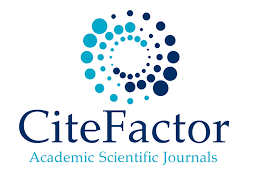The optimization of 3D printed PLA/EPO/Lignin Biocomposite’s tensile strength using three different supervised learning applications
Abstract
Developing a sustainable and biodegradable biocomposite for 3D printing necessitates iterative experimentation to achieve the desired composition and properties. Combining polylactic acid (PLA), epoxidized palm oil (EPO), and lignin offers a promising formulation for a 3D biocomposite filament with diverse potential applications. To optimize its performance specifically for 3D printing applications, the use of machine learning techniques can expedite the process of property optimization. Employing three distinct machine learning models, namely random forest (RF), support vector regression (SVR), and artificial neural network (ANN), facilitates a comparative analysis to determine the most effective approach for predicting the tensile strength values across different biocomposite compositions. Through model training and evaluation, the comparison reveals that both RF and SVR demonstrate superior accuracy compared to ANN. Notably, RF exhibits exceptional consistency, boasting an average R2 score of 0.9777 and an average mean squared error of 1.5475. SVR follows closely with an average R2 score of 0.9777 and an average mean squared error of 7.7751, while ANN lags behind with an average R2 score of 0.6551 and an average mean squared error of 117.5218. Assessing the performance of these machine learning models underscores their potential applicability in enhancing the production of biocomposite filaments for 3D printing, thereby facilitating the refinement of biocomposite properties.
Full Text:
PDFReferences
References
A. Muzaffar, M.B. Ahamed, K. Deshmukh, T. Kovářík, T. Křenek, S.K.K. Pasha, 3D and 4D printing of pH-responsive and functional polymers and their composites, in: 3D and 4D Printing of Polymer Nanocomposite Materials: Processes, Applications, and Challenges, Elsevier, 2019: pp. 85–117. https://doi.org/10.1016/B978-0-12-816805-9.00004-1.
B. Muñiz Castro, M. Elbadawi, J.J. Ong, T. Pollard, Z. Song, S. Gaisford, G. Pérez, A.W. Basit, P. Cabalar, A. Goyanes, Machine learning predicts 3D printing performance of over 900 drug delivery systems, Journal of Controlled Release 337 (2021) 530–545. https://doi.org/10.1016/j.jconrel.2021.07.046.
G.D. Goh, S.L. Sing, W.Y. Yeong, A review on machine learning in 3D printing: applications, potential, and challenges, Artif Intell Rev 54 (2021) 63–94. https://doi.org/10.1007/s10462-020-09876-9.
A. Zolfagharian, L. Durran, S. Gharaie, B. Rolfe, A. Kaynak, M. Bodaghi, 4D printing soft robots guided by machine learning and finite element models, Sens Actuators A Phys 328 (2021). https://doi.org/10.1016/j.sna.2021.112774.
S. Akbari, Y.-F. Zhang, D. Wang, Q. Ge, 4D Printing and Its Biomedical Applications, in: 3D and 4D Printing in Biomedical Applications, Wiley-VCH Verlag GmbH & Co. KGaA, Weinheim, Germany, 2018: pp. 343–372. https://doi.org/10.1002/9783527813704.ch14.
M. Elbadawi, L.E. McCoubrey, F.K.H. Gavins, J.J. Ong, A. Goyanes, S. Gaisford, A.W. Basit, Disrupting 3D printing of medicines with machine learning, Trends Pharmacol Sci 42 (2021) 745–757. https://doi.org/10.1016/j.tips.2021.06.002.
S. Ponis, E. Aretoulaki, T.N. Maroutas, G. Plakas, K. Dimogiorgi, A systematic literature review on additive manufacturing in the context of circular economy, Sustainability (Switzerland) 13 (2021). https://doi.org/10.3390/su13116007.
Q. Ge, Y. Mao, K. Yu, M.L. Dunn, H. Jerry Qi, Active composites and 4D printing, in: ICCM International Conferences on Composite Materials, 2015.
S. Ulag, C. Kalkandelen, T. Bedir, G. Erdemir, S.E. Kuruca, F. Dumludag, C.B. Ustundag, E. Rayaman, N. Ekren, B. Kilic, O. Gunduz, Fabrication of three-dimensional PCL/BiFeO3 scaffolds for biomedical applications, Materials Science and Engineering: B 261 (2020) 114660. https://doi.org/10.1016/J.MSEB.2020.114660.
Y.O. Kewuyemi, H. Kesa, R. Meijboom, O.A. Alimi, O.A. Adebo, 3D food printing improves color profile and structural properties of the derived novel whole-grain sourdough and malt biscuits, Sci Rep 12 (2022) 1–11.
N.A.A. Rahman, H. Anuar, F. Ali, J. Suhr, Poly(Lactic) Acid Reinforced with Alkaline Lignin Biocomposites Prepared by Thermal Extrusion for Sustainable 3D Printing Process, J Phys Conf Ser 2129 (2021) 1–7. https://doi.org/10.1088/1742-6596/2129/1/012003.
H. Anuar, N.A.A. Rahman, M.R. Manshor, Y.A. Alli, O.A. Alimi, F. Alif, J. Suhr, Novel soda lignin/PLA/EPO biocomposite: A promising and sustainable material for 3D printing filament, Mater Today Commun 35 (2023) 106093. https://doi.org/10.1016/J.MTCOMM.2023.106093.
O.A. Alimi, N. Bingwa, R. Meijboom, Homemade 3-D printed flow reactors for heterogeneous catalysis, Chemical Engineering Research and Design 150 (2019) 116–129.
Z. Liu, Y. Wang, B. Wu, C. Cui, Y. Guo, C. Yan, A critical review of fused deposition modeling 3D printing technology in manufacturing polylactic acid parts, The International Journal of Advanced Manufacturing Technology 102 (2019) 2877–2889. https://doi.org/10.1007/s00170-019-03332-x.
M. Tanase-Opedal, E. Espinosa, A. Rodríguez, G. Chinga-Carrasco, Lignin: A biopolymer from forestry biomass for biocomposites and 3D printing, Materials 12 (2019) 1–15. https://doi.org/10.3390/ma12183006.
R.J. Awale, F.B. Ali, A.S. Azmi, N.I.M. Puad, H. Anuar, A. Hassan, Enhanced flexibility of biodegradable polylactic acid/starch blends using epoxidized palm oil as plasticizer, Polymers (Basel) 10 (2018). https://doi.org/10.3390/polym10090977.
E. Alpaydin, Introduction to Machine Learning, 3rd Editio, The MIT Press, London, 2014.
M. Mohammed, M.B. Khan, E.B.M. Bashie, Machine learning: Algorithms and applications, CRC Press, 2016. https://doi.org/10.1201/9781315371658.
M.A. Mahmood, A.I. Visan, C. Ristoscu, I.N. Mihailescu, Artificial Neural Network Algorithms for 3D Printing, Materials 14 (2020) 163. https://doi.org/10.3390/ma14010163.
E. Alpaydin, Introducing to Machine Learning Third Edition, 3rd Editio, The MIT Press, London, 2014.
M. Alloghani, D. Al-Jumeily, J. Mustafina, A. Hussain, A.J. Aljaaf, A Systematic Review on Supervised and Unsupervised Machine Learning Algorithms for Data Science, in: 2020: pp. 3–21. https://doi.org/10.1007/978-3-030-22475-2_1.
G. Xu, G. Zhou, F. Althoey, H.M. Hadidi, A. Alaskar, A.M. Hassan, F. Farooq, Evaluation of properties of bio-composite with interpretable machine learning approaches: optimization and hyper tuning, Journal of Materials Research and Technology 25 (2023) 1421–1446. https://doi.org/10.1016/j.jmrt.2023.06.007.
T. Kek, P. Potočnik, M. Misson, Z. Bergant, M. Sorgente, E. Govekar, R. Šturm, Characterization of Biocomposites and Glass Fiber Epoxy Composites Based on Acoustic Emission Signals, Deep Feature Extraction, and Machine Learning, Sensors 22 (2022). https://doi.org/10.3390/s22186886.
J.F. Fatriansyah, E. Kustiyah, S.N. Surip, A. Federico, A.F. Pradana, A.S. Handayani, M. Jaafar, D. Dhaneswara, Fine-tuning optimization of poly lactic acid impact strength with variation of plasticizer using simple supervised machine learning methods, Express Polym Lett 17 (2023) 964–973. https://doi.org/10.3144/expresspolymlett.2023.71.
G. Xu, G. Zhou, F. Althoey, H.M. Hadidi, A. Alaskar, A.M. Hassan, F. Farooq, Evaluation of properties of bio-composite with interpretable machine learning approaches: optimization and hyper tuning, Journal of Materials Research and Technology 25 (2023) 1421–1446. https://doi.org/10.1016/j.jmrt.2023.06.007.
G.A. Lyngdoh, S. Das, Integrating multiscale numerical simulations with machine learning to predict the strain sensing efficiency of nano-engineered smart cementitious composites, Mater Des 209 (2021) 109995. https://doi.org/10.1016/j.matdes.2021.109995.
B. Lin, Y. Bai, B.X. Xu, Data-driven microstructure sensitivity study of fibrous paper materials, Mater Des 197 (2021) 109193. https://doi.org/10.1016/j.matdes.2020.109193.
G.A. Lyngdoh, S. Das, Integrating multiscale numerical simulations with machine learning to predict the strain sensing efficiency of nano-engineered smart cementitious composites, Mater Des 209 (2021) 109995. https://doi.org/10.1016/j.matdes.2021.109995.
B. Lin, Y. Bai, B.X. Xu, Data-driven microstructure sensitivity study of fibrous paper materials, Mater Des 197 (2021) 109193. https://doi.org/10.1016/j.matdes.2020.109193.
DOI: http://dx.doi.org/10.52155/ijpsat.v51.1.7250
Refbacks
- There are currently no refbacks.
Copyright (c) 2025 Amjad Fakhri Kamarulzaman, Yakubu Adekunle Alli, Hazleen Anuar, Mayowa Isiolaotan, Mohd Romainor Manshor, Bolade Onafuye Atinuke, Samuel Oluwadadepo Oni, Nwankwo Uche Dickson, Caleb Joel Nwaogwugwu, Alfred Yeboah, Akinyemi Michael Iledare

This work is licensed under a Creative Commons Attribution 4.0 International License.



















